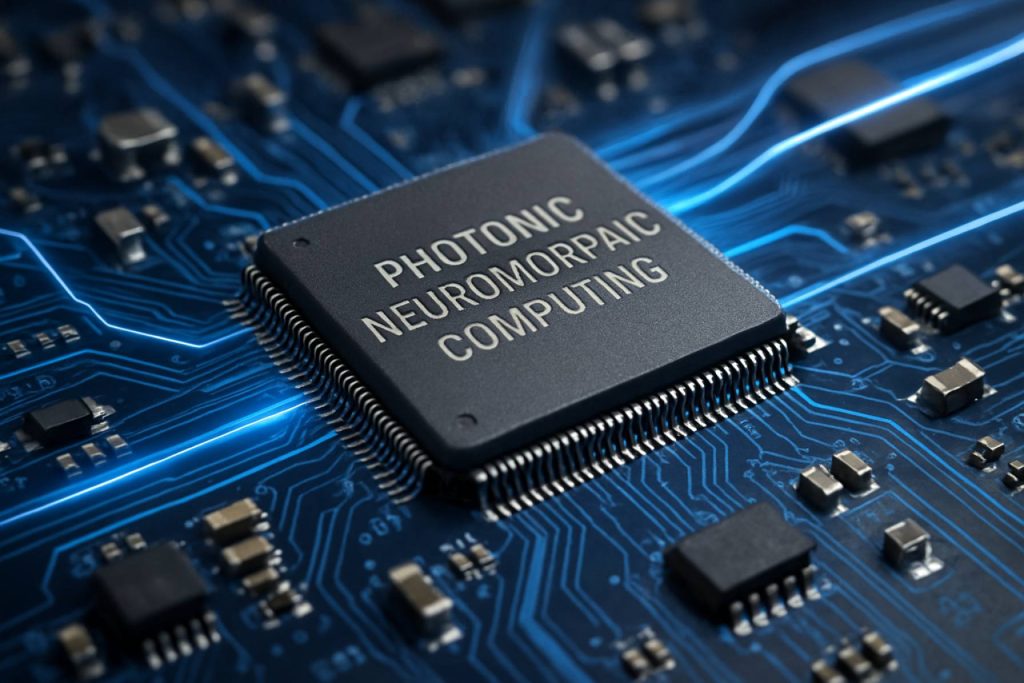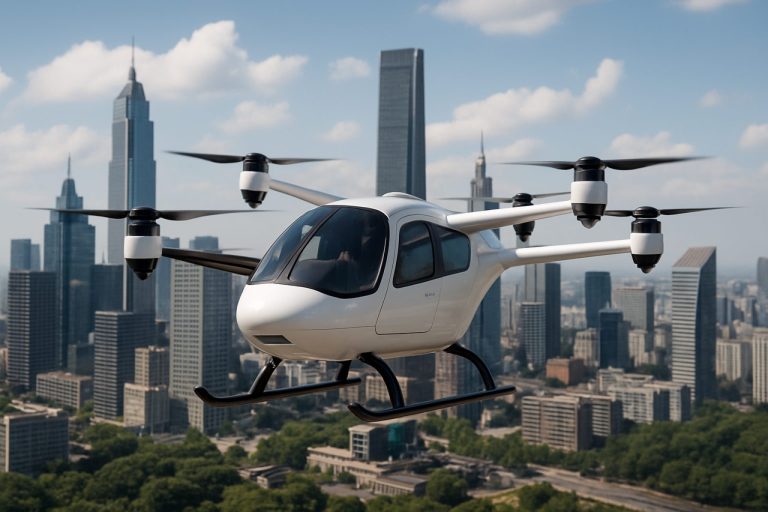
Photonic Neuromorphic Computing Industry Report 2025: Market Dynamics, Technology Innovations, and Strategic Forecasts Through 2030. Explore Key Trends, Regional Leaders, and Growth Opportunities in Next-Gen AI Hardware.
- Executive Summary & Market Overview
- Key Technology Trends in Photonic Neuromorphic Computing
- Competitive Landscape and Leading Players
- Market Growth Forecasts (2025–2030): CAGR, Revenue, and Volume Analysis
- Regional Analysis: North America, Europe, Asia-Pacific, and Rest of World
- Future Outlook: Emerging Applications and Investment Hotspots
- Challenges, Risks, and Strategic Opportunities
- Sources & References
Executive Summary & Market Overview
Photonic neuromorphic computing represents a paradigm shift in computational architectures, leveraging the unique properties of light to emulate the neural structures and processing mechanisms of the human brain. Unlike traditional electronic neuromorphic systems, photonic approaches utilize photons instead of electrons, enabling ultra-fast data transmission, parallelism, and significant reductions in energy consumption. As of 2025, the market for photonic neuromorphic computing is in its nascent but rapidly evolving stage, driven by the convergence of advances in photonic integrated circuits, artificial intelligence (AI), and the growing demand for high-performance, energy-efficient computing solutions.
The global photonic neuromorphic computing market is projected to experience robust growth over the next decade. According to International Data Corporation (IDC), the broader neuromorphic computing sector is expected to reach multi-billion-dollar valuations by 2030, with photonic technologies accounting for a significant share due to their scalability and performance advantages. Key drivers include the exponential growth of data generated by AI applications, the limitations of Moore’s Law in traditional silicon-based electronics, and the urgent need for sustainable computing infrastructure.
Major industry players and research institutions, such as IBM, Intel, and Massachusetts Institute of Technology (MIT), are investing heavily in photonic neuromorphic research and prototype development. These efforts are supported by government initiatives in the US, Europe, and Asia, aiming to secure technological leadership in next-generation computing. The market is witnessing increased patent activity, strategic partnerships, and venture capital investments, signaling strong commercial interest and the potential for disruptive innovation.
Key application areas poised for early adoption include real-time data analytics, autonomous vehicles, advanced robotics, and edge computing for the Internet of Things (IoT). Photonic neuromorphic systems promise to deliver orders-of-magnitude improvements in processing speed and energy efficiency compared to conventional digital processors, making them attractive for mission-critical and resource-constrained environments.
Despite the promising outlook, the market faces challenges such as fabrication complexity, integration with existing electronic systems, and the need for new software paradigms. However, ongoing breakthroughs in materials science, photonic device engineering, and algorithm development are expected to accelerate commercialization. As of 2025, photonic neuromorphic computing stands at the forefront of the next wave of AI hardware innovation, with the potential to redefine the landscape of high-performance computing.
Key Technology Trends in Photonic Neuromorphic Computing
Photonic neuromorphic computing leverages the unique properties of light to emulate the neural architectures and processing methods of the human brain, offering significant advantages in speed, parallelism, and energy efficiency over traditional electronic approaches. As the field matures in 2025, several key technology trends are shaping its trajectory and commercial potential.
- Integrated Photonic Circuits: The integration of photonic components—such as waveguides, modulators, and detectors—on a single chip is accelerating. Silicon photonics platforms are enabling scalable, compact, and cost-effective neuromorphic processors, with companies like Intel and imec advancing fabrication techniques for high-density photonic neural networks.
- Optical Nonlinearities for Synaptic Function: Harnessing optical nonlinearities is critical for mimicking synaptic weights and plasticity. Recent breakthroughs in materials such as phase-change materials and two-dimensional semiconductors are enabling tunable, non-volatile photonic synapses, as demonstrated in research collaborations led by IBM Research and MIT.
- All-Optical Neural Networks: The push toward all-optical processing—where both data transmission and computation occur in the optical domain—continues to gain momentum. This eliminates the need for energy-intensive optical-electrical conversions, with startups like Lightmatter and Lightelligence developing commercial prototypes for AI acceleration.
- Hybrid Photonic-Electronic Architectures: While pure photonic systems are promising, hybrid architectures that combine photonic cores with electronic control and memory are emerging as a practical solution for near-term deployment. These systems balance the speed of optics with the maturity of electronic integration, as seen in projects funded by DARPA and European Commission.
- Advances in Photonic Device Fabrication: Progress in nanofabrication and packaging is reducing losses and improving the reliability of photonic neuromorphic chips. Efforts by GlobalFoundries and TSMC are making wafer-scale photonic integration more accessible for commercial and research applications.
These trends are converging to position photonic neuromorphic computing as a transformative technology for AI, edge computing, and high-performance data centers, with the potential for significant market growth in the coming years.
Competitive Landscape and Leading Players
The competitive landscape of the photonic neuromorphic computing market in 2025 is characterized by a dynamic mix of established technology giants, specialized startups, and research-driven collaborations. This sector is still in its nascent stage, but rapid advancements in integrated photonics and artificial intelligence are accelerating commercialization efforts. Key players are focusing on developing scalable, energy-efficient, and high-speed neuromorphic processors that leverage the unique advantages of photonics over traditional electronic architectures.
Among the leading companies, Intel Corporation has made significant investments in neuromorphic research, including photonic approaches, through its Intel Labs division. The company’s efforts are complemented by partnerships with academic institutions and government agencies to push the boundaries of photonic chip design. Similarly, IBM is actively exploring photonic neural networks as part of its broader quantum and AI hardware initiatives, aiming to address the limitations of electronic interconnects in large-scale neural systems.
Startups are also playing a pivotal role in shaping the competitive landscape. Lightmatter and Lightelligence are two prominent US-based companies developing photonic processors specifically designed for AI workloads. Both firms have secured substantial venture funding and are collaborating with hyperscale data center operators to pilot their technology in real-world applications. Their solutions promise significant improvements in speed and energy efficiency compared to conventional silicon-based AI accelerators.
In Europe, Imperial College London and École Polytechnique Fédérale de Lausanne (EPFL) are at the forefront of academic research, often partnering with industry to commercialize breakthroughs in photonic neuromorphic hardware. These collaborations are supported by EU-funded initiatives such as the Human Brain Project, which fosters cross-disciplinary innovation.
- Synopsys and Ansys provide essential design and simulation tools for photonic integrated circuits, enabling faster prototyping and reducing time-to-market for new entrants.
- Asian players, including NTT in Japan and Tsinghua University in China, are investing heavily in photonic AI research, often backed by national strategic initiatives.
Overall, the competitive landscape in 2025 is marked by a blend of cross-sector partnerships, aggressive R&D investments, and a race to achieve commercial viability. The next few years are expected to see increased consolidation and the emergence of clear market leaders as photonic neuromorphic computing transitions from laboratory prototypes to scalable, deployable solutions.
Market Growth Forecasts (2025–2030): CAGR, Revenue, and Volume Analysis
The photonic neuromorphic computing market is poised for robust growth between 2025 and 2030, driven by escalating demand for high-speed, energy-efficient artificial intelligence (AI) hardware. According to projections from International Data Corporation (IDC) and MarketsandMarkets, the global market for photonic neuromorphic computing is expected to register a compound annual growth rate (CAGR) of approximately 38% during this period. This surge is attributed to the increasing adoption of photonic-based AI accelerators in data centers, edge computing, and advanced research applications.
Revenue forecasts indicate that the market, valued at an estimated USD 0.5 billion in 2025, could surpass USD 3.2 billion by 2030. This growth trajectory is underpinned by significant investments from both public and private sectors in photonic integrated circuits (PICs) and neuromorphic hardware, as well as ongoing collaborations between leading technology firms and research institutions. Notably, companies such as Intel Corporation, IBM, and Lightmatter are accelerating commercialization efforts, which is expected to further boost market revenues.
In terms of volume, the shipment of photonic neuromorphic processors is projected to grow from a few thousand units in 2025 to over 100,000 units annually by 2030. This rapid increase is fueled by the deployment of photonic chips in AI inference engines, optical interconnects, and real-time signal processing systems. The Asia-Pacific region, led by China, Japan, and South Korea, is anticipated to witness the highest volume growth, owing to substantial government funding and a strong semiconductor manufacturing ecosystem, as highlighted by SEMI.
Key market drivers include the need for ultra-low latency computing, the limitations of electronic-based neuromorphic systems, and the growing complexity of AI workloads. However, challenges such as high initial costs, integration complexities, and the nascent stage of supporting software ecosystems may temper the pace of adoption in the early years of the forecast period. Nevertheless, as photonic technologies mature and economies of scale are realized, the market is expected to experience accelerated growth, particularly in sectors requiring real-time, high-throughput AI processing.
Regional Analysis: North America, Europe, Asia-Pacific, and Rest of World
The regional landscape for photonic neuromorphic computing in 2025 is shaped by varying levels of research intensity, funding, and industrial adoption across North America, Europe, Asia-Pacific, and the Rest of the World. Each region demonstrates unique drivers and challenges influencing the pace and direction of market development.
- North America: North America, led by the United States, remains at the forefront of photonic neuromorphic computing innovation. The region benefits from robust investments by both government agencies and private sector leaders such as DARPA and IBM. The presence of top-tier research universities and a vibrant startup ecosystem accelerates the commercialization of photonic neuromorphic technologies. In 2025, North America is expected to account for the largest market share, driven by early adoption in defense, data centers, and AI research applications. Strategic collaborations between academia and industry further bolster the region’s leadership position.
- Europe: Europe is characterized by strong public funding and coordinated research initiatives, such as the European Commission’s Horizon Europe program. Countries like Germany, the UK, and France are investing in photonic hardware and neuromorphic algorithms, with a focus on energy efficiency and ethical AI. European companies and research consortia are increasingly targeting industrial automation and automotive applications. However, the region faces challenges in scaling up pilot projects to commercial deployment due to regulatory complexities and fragmented markets.
- Asia-Pacific: The Asia-Pacific region, particularly China, Japan, and South Korea, is rapidly expanding its capabilities in photonic neuromorphic computing. Significant government funding and industrial policy support, especially from entities like NSFC in China and NEDO in Japan, are driving research and commercialization. The region’s strong semiconductor manufacturing base and growing AI ecosystem position it as a key growth market. In 2025, Asia-Pacific is expected to witness the fastest CAGR, with applications spanning smart manufacturing, telecommunications, and consumer electronics.
- Rest of World: Other regions, including the Middle East, Latin America, and Africa, are in the nascent stages of adopting photonic neuromorphic computing. While there are isolated research initiatives and pilot projects, limited funding and infrastructure constrain market growth. However, increasing interest in digital transformation and AI-driven solutions may spur future investments, particularly in sectors like energy and healthcare.
Overall, regional disparities in funding, infrastructure, and policy support will continue to shape the global photonic neuromorphic computing market in 2025, with North America and Asia-Pacific leading in innovation and adoption.
Future Outlook: Emerging Applications and Investment Hotspots
Looking ahead to 2025, photonic neuromorphic computing is poised to transition from laboratory prototypes to early-stage commercial applications, driven by the convergence of artificial intelligence (AI) demands and the limitations of traditional electronic hardware. The unique advantages of photonic systems—such as ultra-high bandwidth, low latency, and energy efficiency—are catalyzing interest in sectors where conventional silicon-based neuromorphic chips face bottlenecks.
Emerging applications are expected to cluster around high-throughput, real-time processing tasks. Notably, edge AI for autonomous vehicles, advanced robotics, and next-generation telecommunications are identified as key verticals. For instance, photonic neuromorphic processors can enable real-time sensor fusion and decision-making in autonomous driving, where microsecond-level latency is critical. Similarly, in 5G/6G networks, photonic chips promise to accelerate signal processing and network optimization, supporting the exponential growth in data traffic and connected devices (International Telecommunication Union).
Healthcare is another promising frontier. Photonic neuromorphic systems are being explored for rapid medical image analysis and brain-computer interfaces, leveraging their ability to process vast datasets in parallel with minimal power consumption. Early-stage collaborations between research institutions and medtech companies are already underway, aiming to translate these capabilities into clinical diagnostics and neuroprosthetics (Nature).
From an investment perspective, 2025 is expected to see increased venture capital and strategic corporate funding targeting photonic AI startups and university spin-offs. Regions with strong photonics and semiconductor ecosystems—such as the US (Silicon Valley, Boston), Europe (Germany, the Netherlands), and parts of East Asia (Japan, South Korea)—are emerging as investment hotspots. Governments are also ramping up support through research grants and innovation clusters, recognizing the technology’s potential to underpin future digital infrastructure (European Parliament).
- Key players to watch include Lightmatter, Lightelligence, and Optalysys, all of which have announced new funding rounds and pilot projects for 2025.
- Collaborative initiatives, such as the EUROPRACTICE program, are fostering cross-border R&D and accelerating technology transfer from academia to industry.
In summary, 2025 will likely mark a pivotal year for photonic neuromorphic computing, with early commercial deployments, expanding application domains, and intensifying investment activity shaping the sector’s trajectory.
Challenges, Risks, and Strategic Opportunities
Photonic neuromorphic computing, which leverages light-based components to emulate neural architectures, presents a transformative opportunity for high-speed, energy-efficient artificial intelligence. However, the sector faces significant challenges and risks that could impact its trajectory in 2025, while also offering strategic opportunities for innovators and investors.
Challenges and Risks
- Manufacturing Complexity: The fabrication of photonic integrated circuits (PICs) with the precision required for neuromorphic tasks remains a major hurdle. Unlike mature CMOS processes, photonic device manufacturing lacks standardization, leading to higher costs and lower yields. This complexity is highlighted in industry analyses by IDC and Gartner.
- Integration with Electronics: Seamlessly interfacing photonic components with existing electronic systems is non-trivial. Hybrid systems often suffer from signal conversion losses and latency, as noted by imec, a leading R&D hub in nanoelectronics and digital technologies.
- Algorithmic Adaptation: Most AI algorithms are optimized for digital, electronic hardware. Adapting or redesigning these for photonic architectures requires significant research and development, as emphasized in reports by McKinsey & Company.
- Scalability and Reliability: Scaling photonic neuromorphic systems to commercially viable sizes while maintaining reliability and low error rates is a persistent challenge, according to Analysys Mason.
- Investment Risk: The capital-intensive nature of photonic R&D, coupled with uncertain time-to-market, poses financial risks for startups and established players alike, as outlined by CB Insights.
Strategic Opportunities
- AI Acceleration: Photonic neuromorphic chips promise orders-of-magnitude improvements in speed and energy efficiency for AI workloads, especially in data centers and edge computing, as projected by Omdia.
- Vertical Integration: Companies that can vertically integrate photonic design, manufacturing, and software stand to capture significant value, as suggested by Boston Consulting Group.
- Strategic Partnerships: Collaborations between photonics specialists, semiconductor foundries, and AI software firms can accelerate commercialization and reduce risk, a trend observed by Accenture.
- Government and Defense Applications: National security agencies are investing in photonic neuromorphic research for secure, high-speed signal processing, as reported by DARPA.
In summary, while photonic neuromorphic computing faces formidable technical and market risks in 2025, the sector’s potential for disruptive performance gains creates compelling opportunities for those able to navigate its complexities.
Sources & References
- International Data Corporation (IDC)
- IBM
- Massachusetts Institute of Technology (MIT)
- imec
- Lightelligence
- DARPA
- Imperial College London
- École Polytechnique Fédérale de Lausanne (EPFL)
- Human Brain Project
- Synopsys
- Tsinghua University
- MarketsandMarkets
- European Commission’s Horizon Europe
- NEDO
- International Telecommunication Union
- Nature
- European Parliament
- Optalysys
- EUROPRACTICE
- McKinsey & Company
- Analysys Mason
- Omdia
- Accenture



